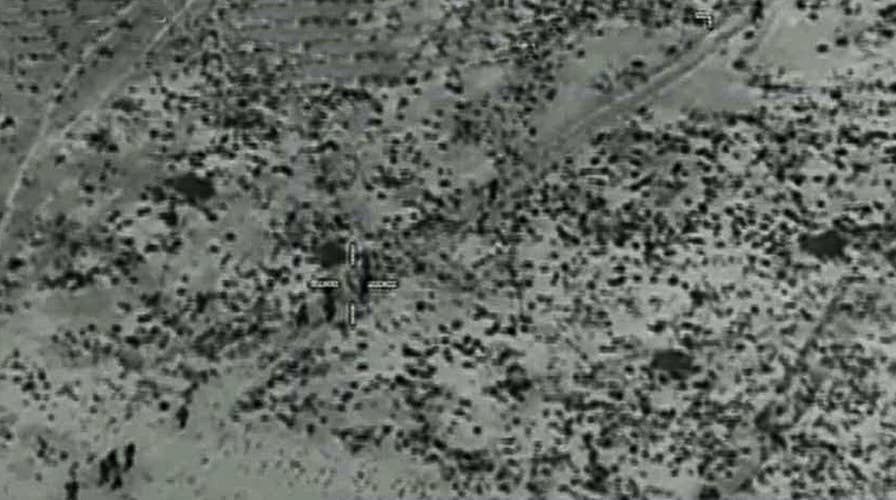US: More than 70 Taliban leaders killed in Afghanistan
U.S. military ramps up airstrikes, more than 500 in April alone; national security correspondent Jennifer Griffin reports from the Pentagon.
U.S. Marines in Afghanistan killed dozens of Taliban leaders last week using rocket artillery after tracking them to a meeting in volatile Helmand Province, according to the top American general in Afghanistan Wednesday.
U.S. Forces Afghanistan said more than 50 Taliban commanders, including the deputy Taliban shadow governor of Helmand was killed. Taliban leaders from six other provinces across Afghanistan were killed as well in the strike in the Musa Qala district of Helmand, according to the statement.
Twenty other Taliban leaders were killed in air strikes earlier this month by drones and Air Force A-10 Warthog jets based in neighboring Kandahar, which arrived earlier this year along with thousands of additional American troops.
During a Pentagon press conference from his office in Kabul Wednesday, Army Gen. John Nicholson told reporters the strikes would disrupt the insurgent group the U.S. military has been fighting for more than 16 years.
“Helmand has been the financial engine of the insurgency. The Taliban draws 60 percent of their revenue from narcotics (and) criminal activity,” Nicholson said.
But Nicholson played down the impact the strikes would have nationwide.
“I would not call it strategic significance, but it definitively has a significant local significance in terms of the fight in southern Afghanistan,” he said.
Nicholson’s two-year tour is winding down later this year.
President Donald Trump has nominated Army Lt. Gen. Scott Miller, the current head of Joint Special Operations Command (JSOC), which oversees the nation’s elite commando units, such as Delta Force, 75th Ranger Regiment and SEAL Team Six, collectively known as the National Mission Force.
Recently, U.S. drones killed dozens of Taliban fighters attempting to take over western Farah Province, which borders Iran.
Last month, the U.S. military launched the second highest number of airstrikes in the past six and a half years in Afghanistan.
As the ISIS war in Iraq and Syria winds down, the U.S. military is ramping up operations in Afghanistan.
There are roughly 15,000 U.S. troops in Afghanistan, about double the number when Trump took office — far fewer than the 100,000 deployed by former President Barack Obama.
In April, there were more airstrikes in Afghanistan — 562 — than Iraq and Syria combined over the previous two months. Many of the strikes targeted Taliban drug labs.
But Taliban attacks remain a real threat and persist. Wednesday, U.S.-backed Afghan security forces thwarted an attempted suicide bombing at the Interior Ministry.
One Afghan policeman was killed. Five others were hurt, but no civilians were killed, according to Afghan officials in Kabul.
Nicholson praised the actions of the Afghan security forces for preventing the attack from becoming much worse.
“The Afghan guards immediately recognized these as old uniforms, called on the terrorists to exit the vehicle so they could be checked out, and at that point the fighting started,” Nicholson said, in his first press conference to Pentagon reporters in six months.
Hundreds of Afghan civilians have been killed in similar suicide attacks. Nicholson blamed the Taliban, or the Haqqani network — a Taliban off-shoot for the attack on the Interior Ministry.
An ISIS affiliate has taken credit for a spate of attacks against the country’s Shia minority in the past year killing hundreds more.
But unlike the ISIS-affiliated fighters, Nicholson said the Taliban is open to peace talks and the Afghan government has been receptive.
Nicholson said the talks have been conducted in secret, “off the stage.”
“It’s occurring at multiple levels. So you see mid-level, senior-level Taliban leaders engaging with Afghans,” Nicholson said.
Nicholson said between February and April, Taliban attacks dropped 30 percent below the five-year average, while these talks were taking place.
Since the Taliban announced their spring offensive, Nicholson said the levels of violence had increased, but still 10 percent below the five-year average.


